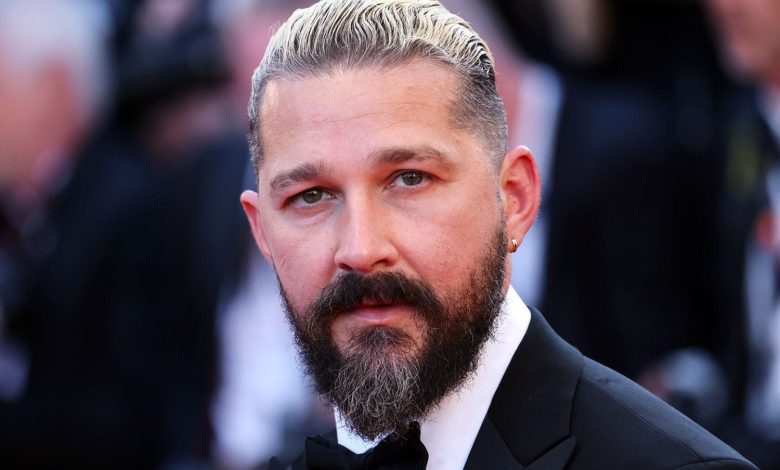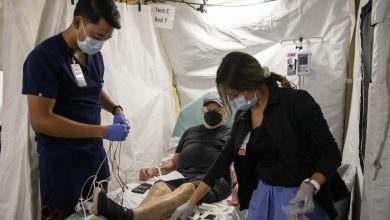Shia LaBeouf Breaks Silence on Steroid Use for Extreme 55-Pound Weight Gain

In recent weeks, Hollywood actor Shia LaBeouf has made headlines for more than just his cinematic projects — he’s revealed the shocking extremes he went through to physically transform himself for a film role. According to multiple new reports, LaBeouf admitted publicly to using performance-enhancing drugs including steroids (or substances similar to them) in order to gain about 55 pounds in a relatively short span. The confession has ignited debate about the pressures actors face, the dangers of drug-assisted physique changes, and the broader toll of chasing extreme transformations in the entertainment industry.
The Confession: What LaBeouf Says Happened
The Role and the Weight Goal
LaBeouf’s revelation centers around a recent film (reportedly called Salvable) in which he took on a character requiring a significantly more muscular, heavier build. To bring authenticity to the role, he decided he needed to bulk up — and fast. According to an article in FitnessVolt, LaBeouf acknowledged:
“I was 220 pounds; now I’m 165,”
“They told me I was about to die. I had a cardiologist tell me ‘you’ve got to stop.’ I was on all kinds of weird steroids … Some weird new steroid they gave me so that I got big.”
This statement indicates both an immense physical change and a health warning issued by a medical professional — a sobering recognition that he risked his life for the transformation.
LaBeouf also specified that he used SARMs (Selective Androgen Receptor Modulators) — compounds that mimic some effects of anabolic steroids — among “all kinds of weird steroids.”
The Health Warning & Near-Death Framing
Perhaps the most dramatic detail in his account is the warning from a cardiologist: that he was about to die if he continued down the path he was on. In his words, the message was blunt and dire: stop.
Moreover, LaBeouf said that he was on “weird new steroids” — implying experimental or lesser-known compounds that could carry unknown risks. The combination of extreme weight gain, performance enhancers, and medical danger underscores just how high the stakes became.
A Pattern of Risk
This recent revelation is not the first time LaBeouf has discussed using steroids. In reflecting on past dark periods in his life, he has admitted that during certain times — including when he was in dire personal straits and even sleeping rough in New York’s Central Park — he was “on steroids.”
He described sleeping near areas in Central Park where horses were kept, moving every few hours to avoid detection. During that time, he connected his steroid use to personal instability and spiritual emptiness:
“I was in the park … I was on steroids and I’m not in a good way.”
“Fear will make you move different. I found it came from having absolutely no spiritual life … It made me a piece of s—. Not a nice guy.”
Thus, his admission about the 55-pound gain seems part of a broader history in which he has confronted substance use, personal crises, and physical extremes.
The Broader Context: Hollywood, Body Transformations, and Health Costs
LaBeouf’s confession reignites a long-standing tension in film culture: when an actor changes their body drastically — losing or gaining extreme weight — how much of that is purely “method” and how much is medically risky?
The Celebrity Precedent
Many actors have transformed themselves for roles, sometimes with startling results. Christian Bale, Matthew McConaughey, Jared Leto, and others have either bulked up or slimmed down dramatically. The difference is that many of those transformations are supported by rigorous nutrition, training, and medical supervision — without crossing into steroid or PED territory (at least as publicly admitted).
LaBeouf’s willingness to discuss his steroid use is more unusual; few actors openly admit to such practices. In doing so, he puts a spotlight on the sometimes hidden physical pressures behind “Hollywood transformations.”
SARMs, Steroids, and the Gray Area
One key detail in LaBeouf’s statement is the mention of SARMs — substances designed to selectively stimulate androgen receptors, theoretically offering muscle-building effects with fewer side effects than traditional anabolic steroids. That said, the long-term health effects and safety profile of many SARMs are not well established, especially in the doses or combinations sometimes used by physique enthusiasts.
By combining SARMs with “weird new steroids,” LaBeouf suggests he was experimenting with substances of uncertain safety. That he admits a cardiologist warned him of imminent danger underscores the risk he was undertaking.
The Physical & Psychological Toll
Rapid, extreme body changes can take a toll in multiple ways:
- Cardiovascular strain: Sudden shifts in mass, especially with pharmacological enhancement, put stress on the heart, blood pressure, and vascular system.
- Hormonal imbalances: Use of anabolic substances can suppress natural hormone production, disrupt endocrine feedback loops, and cause long-term endocrine dysfunction.
- Liver, kidney, and organ stress: Many steroids and their analogues are hepatotoxic or strain kidneys; combining them with intense training can worsen damage.
- Psychological pressures: The mental and emotional drive to hit a certain “look” for a role can breed anxiety, body dysmorphia, and extreme self-criticism.
- Post-transformation fallout: After the film ends, there’s often pressure to “come down” or reverse the transformation — a process that can lead to fatigue, depression, or health problems.
LaBeouf’s admission — that he was told he was on the brink of death — suggests that the cost of this particular transformation was very high.
Parsing the Response: Reactions & Risks
Public Reaction
While reactions are still emerging, the disclosure has drawn considerable attention in fitness, entertainment, and celebrity news circles. Articles from fitness and celebrity media (e.g. FitnessVolt) framed the admission in stark terms, noting the near-death warning and the willingness of a mainstream actor to go so far for authenticity.
In fitness and bodybuilding communities, the revelation is likely to trigger debate about the “dark side” of physique transformations — especially when celebs cross lines with experimental compounds. Some will see LaBeouf’s admission as courageous honesty; others will warn it sets a dangerous example for impressionable fans.
Questions & Skepticism
Skeptics will likely raise questions:
- Accuracy of the weight gain number
Is “55 pounds” precise or rounding? In Hollywood, numbers are sometimes exaggerated for narrative impact. - Which compounds, exactly?
LaBeouf refers to “weird new steroids” and “SARMs,” but does not publicly name specific substances. That ambiguity invites speculation about potency and risk. - Context of medical oversight
He says he was warned by a cardiologist — but when? How soon? Was the intervention enough? More details are needed to fully assess the risk trajectory and whether he had medical support in monitoring vital functions. - Sustainability and after-effects
Did he suffer lasting damage? Has he recovered? The long-term consequences of such chemical and physical stress can linger.
Until he or his representatives provide fuller detail — or until other corroborative sources or documents emerge — parts of the story remain open to interpretation.
What This Reveals About Hollywood Pressures
LaBeouf’s confession is more than a shocking fitness anecdote. It points toward systemic issues in the entertainment industry and the costs of authenticity in physically demanding roles.
The Demand for Extreme Physical Authenticity
Audiences and studios increasingly praise actors who physically transform themselves for roles. Whether it’s extreme weight loss, muscle gain, or an entirely new body shape, “method transformations” have become part of the modern star’s portfolio. The pressure to “go all in” can push actors beyond safe limits.
LaBeouf’s willingness to use PEDs suggests that the boundary between intense training and pharmaceutical enhancement is sometimes crossed when stakes are high — and when an actor fears being dismissed if their physique doesn’t match expectations.
Power, Image, and Masculinity
There is also a cultural dimension: in many action, crime, or fighter roles, bulk and muscularity are central to how a character is read. Actors may feel that if they don’t look strong, they won’t be perceived as deserving of certain parts. That can tempt them to seek shortcuts, especially under tight schedules or production demands.
LaBeouf’s statement that “if I was bigger, I could be quieter and kinder” (a reasoning he used in his decision to bulk) suggests psychological motivations tied to presence, perception, and identity.
Mental Health, Substance Use, & Artistic Identity
LaBeouf’s past admissions — such as living in a park, substance use, spiritual upheaval, and extreme behavior — show a larger personal journey intertwined with his art and public life. The latest revelation about steroids may be another chapter in that struggle: the tension between wanting to fully inhabit a role, staying safe, and preserving one’s mental and physical health.
A Timeline: LaBeouf’s Physical Transformations & Admissions
To situate the recent confession, it helps to look back at moments in LaBeouf’s career when his physique or lifestyle became part of public conversation:
- “Lawless” (2012): LaBeouf gained around 40 pounds for the role, describing the physicality as one of the most arduous challenges he had faced.
- Earlier films: For Indiana Jones and Transformers he discussed more modest gains or fitness adjustments. For example, he gained 15 pounds prepping for an Indiana Jones installment.
- Personal crisis periods: Around 2013, he publicly revealed he was living in Central Park, cycling through difficult emotional states, using steroids, and disconnected spiritually.
- Current confession: He now says he gained 55 pounds for Salvable, used SARMs and other steroids, and was warned by a cardiologist of near-fatal risk.
Through these points, one sees an arc from earlier, perhaps more moderate transformations to more extreme ones — intersecting with a life trajectory that has cycled through turbulence, introspection, and creative risk.
How to Read This: Caution, Empathy, and Lessons
Don’t Glorify Risk
One critical takeaway: what LaBeouf did was dangerous. The message should not be “how far can you push your body?” but rather “what are the ethical, medical, and psychological limits we impose — and should impose — on ourselves in art?”
Publicizing such admissions can be a double-edged sword: on one hand, it demystifies what often remains hidden. On the other, it may glamorize extreme behavior to audiences — especially young fans who idolize transformations.
The Importance of Transparency & Medical Oversight
LaBeouf’s openness about the cardiologist’s warning is crucial. It highlights the role of medical professionals and supervision. When transformations are attempted — especially with chemical assistance — constant monitoring, testing, and risk mitigation are essential. Without them, the outcomes can be devastating.
Art Versus Self-Endangerment
At what point does method acting or physical transformation cross into self-harm? Actors and creators must decide whether the value added to a role is worth the risk — not just to the final film, but to one’s long-term career, health, and mental balance. LaBeouf likely crossed that line, and his testimony exposes the danger in blurring that boundary.
Empathy for the Artist’s Burden
It’s easy to criticize an actor for going “too far.” But we should also have empathy: fame, creative ambition, identity pressures, and industry demands can push individuals into extremes they might not otherwise attempt. Acknowledging the emotional and existential burdens that accompany public life can shift conversations away from shame and toward understanding and care.
Possible Aftermath & Future Implications
Investigations & Verifications
As the media latches onto LaBeouf’s admission, people will want further evidence: blood reports, medical records, statements from his physicians or trainers, or corroboration from film crew accounts. The public doesn’t yet know how much of this can be independently verified.
Industry Response & Guidelines
This revelation might spark dialogues among actors, producers, and unions about establishing safer guidelines, standards, or ethics around physical transformations. Could studios require medical oversight, limit the pace of body changes, or offer post-transformation recovery support? LaBeouf’s case could become a catalyst.
Reputation & Creative Legacy
For LaBeouf, the admission is a double-edged sword. On the one hand, it humanizes him and adds a layer of raw honesty to his public persona. On the other, it might expose him to criticism, retrospective judgment, and risk — for both his health and his professional credibility.
Still, many artists who take big risks (and survive them) become symbols of daring, authenticity, and resilience. LaBeouf might be staking a claim in that territory — though one hopes from less perilous ground.
Continued Health Concerns
Even if he has stopped using these compounds, he may suffer lingering effects: cardiac damage, endocrine disruption, metabolic issues, psychological scars. What kind of recovery support will he seek? How will his body respond? Fans and observers will watch closely.
Conclusion: A Cautionary Tale from Hollywood’s Underbelly
Shia LaBeouf’s public admission of using steroids and SARMs to gain 55 pounds is a rare, painful confession from someone in the limelight. It pulls back the curtain on what many fans suspect: that physical transformations often entail hidden corners of risk, compulsion, and sacrifice.
His narrative is not just about muscle and mass — it is about how identity, fear, ambition, and vulnerability converge in the crucible of cinema. It is about what happens when a performer feels that to be credible, they must push past safe boundaries. And it is a text of warning: that the body is not always a prop, but a living system with limits, costs, and consequences.
In speaking out, LaBeouf gives voice to the silent extremes many performers undertake. Whether his confession changes industry norms or inspires deeper self-care among actors, it will likely endure as one of the more vivid testaments to the inner toll of pursuing physical transformation for art.
If you like, I can help you shape this into a version for publication (magazine, blog) or provide a shorter version. Do you want me to polish or shorten it?




